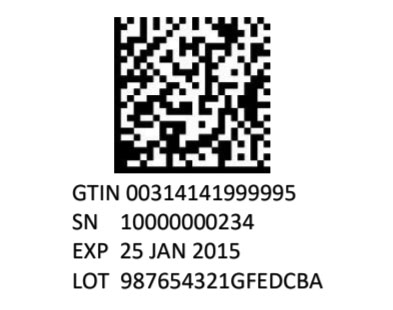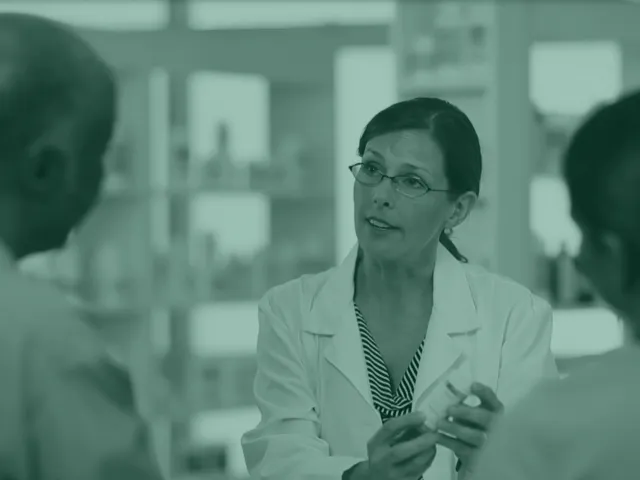Table of contents
As required by DSCSA, most prescription drug products manufactured after November 2017 must display a serialized product identifier on every saleable item. As packaging bearing new barcodes and serial numbers begin to appear on receiving docks and store shelves, pharmacies are assessing their digital strategies and how they will integrate serialized product data into their operations.
What is a 2D Data Matrix?
The terms 2D Data Matrix and 2D Barcode are often used interchangeably, but the 2D GS1 Data Matrix has been adopted by the industry as the “machine-readable data carrier” required by the FDA as part of the product identifier. In the US, the product identifier comprises the 2D Data Matrix and the four required data elements in human-readable form: The Global Trade Identification Number (GTIN), Serial Number, Expiration Date, and Lot Number. The GTIN includes the US National Drug Code (NDC) of the product.

The 2D Data Matrix offers several advantages over the more familiar linear barcode format. They can store far more data than a linear barcode in a much smaller space, an important consideration in product packaging and labeling. They are also easier to scan, and less prone to scanning errors. However, they must be scanned using an image scanner; laser scanners cannot read a 2D Data Matrix.
New technologies, new possibilities
Pharmacies will continue to see products with multiple barcodes—2D barcodes as well as linear barcodes—as the industry adapts to the new regulations and as manufacturers weigh the benefits of having more space on their packaging for branding or consumer messaging: the ability to scan a 2D barcode with a smartphone opens up new possibilities for customer interaction and patient safety.
But pharmacies are also beginning to recognize the potential business value of the the data contained in the 2D Data Matrix in their own operations:
- The expiration date, when associated with a serial number, can be used to manage product rotation and inventory from the distribution center to individual pharmacy locations.
- The serial number provides a unique product identifier that can be used to track product receipt, distribution, and disposition at the saleable item level, and to verify that the product is in a “dispensable state” and not stolen, recalled, or withdrawn from the market.
- Product identification at the saleable item level, rather than at the lot level, streamlines key provisions of the DSCSA that affect pharmacies: product tracing, product verification, detection and response, and notification. Serialized products will enable more rapid and thorough product recalls.
- Serialized data can be used to track or trace the physical movement and status of products as they travel throughout the supply chain using EPCIS, an open GS1 digital data standard that enables supply chain partners to access transaction histories over a network—replacing manual, paper-based T3 processing and storage.
Planning—and scanning—for success
Manufacturers may or may not choose to replace linear barcodes with 2D barcodes. Pharmacies and healthcare systems need to plan for this uncertainty and for the possibility that their current scanning and data systems will not be able to read 2D Data Matrix barcodes. Switching to “smart” scanners that can read multiple barcode formats will allow pharmacy operations to capture and process serialized data “at the edge” and connect to an information-sharing network, where data can be shared with supply chain partners and accessed quickly for product verification and track-and-trace processes.
TraceLink serialization and scanning solutions
TraceLink is leading the industry in helping pharmacies take full advantage of DSCSA-originated serialization data with solutions like Serialization Operations Manager (SOM) and Edge Track scanning technology, designed to integrate with existing ERP and inventory management systems, capture serialized product data as it moves through the enterprise, and connect directly to the TraceLink network.
Every day, thousands of hospital and pharmacy locations rely on the TraceLink network to exchange information with drug suppliers and partners with just a single connection, protect patients from counterfeit drugs, and adhere to legal requirements. Learn more about healthcare and pharmacies on the TraceLink network.





